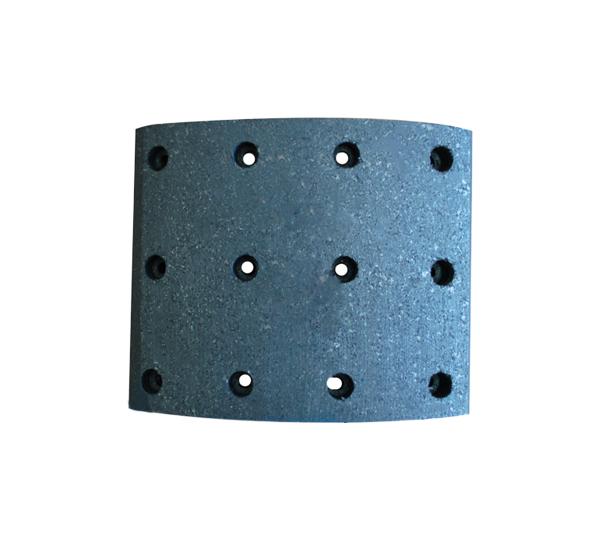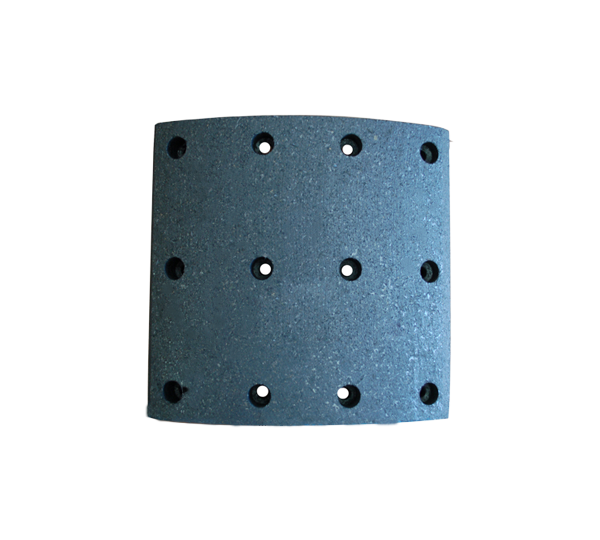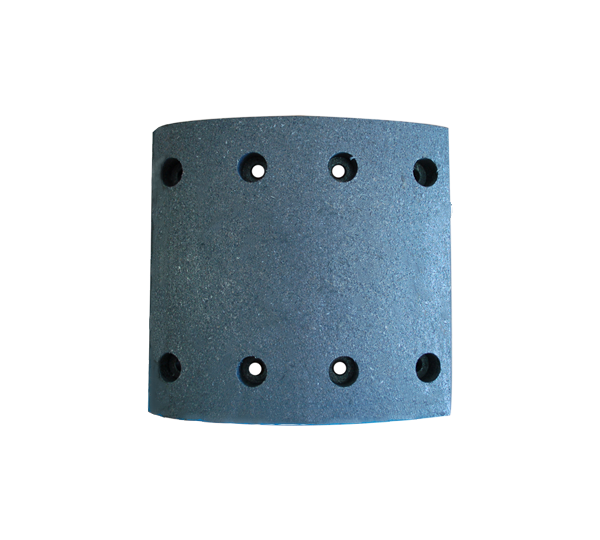Brake pads are also called brake pads. In the braking system of a car, the brake pad is the most critical safety part, and the brake pad plays a decisive role in the quality of all braking functions, so it is said that a good brake pad is the protector of people and cars.
truck brake lining is generally composed of steel plate, bonding insulation layer and friction block, wherein the insulation layer is composed of materials that do not transfer heat, and the purpose is to heat insulation. The conflict block is composed of conflict materials and adhesives. When braking, it is squeezed on the brake disc or brake drum to conflict, and then reaches the intention of the vehicle to decelerate and brake. Due to the friction effect, the friction block will gradually be worn out. Generally speaking, the lower the cost of the brake pads, the faster the wear. After using the conflicting data, replace the brake pads in time, otherwise the steel plate and the brake disc will be in direct contact, which will eventually lose the braking effect and damage the brake disc.
Car brake pads are divided into types: brake pads for disc brakes, brake shoes for drum brakes, and pads for large trucks.
In terms of formula technology, there are: semi-metal brake pads, less metal brake pads, NAO formula brake pads, ceramic brake pads, NAO ceramic brake pads
Brake drums are equipped with brake shoes, but generally people call brake pads to refer to brake pads and brake shoes, so "disc brake pads" are used to specifically indicate that it is the brake pads installed on the disc brakes, not the brake discs.
Brake pad manufacturers talk about vehicle safety. For every car owner, it is the top priority in the driving process. In addition to airbags, anti-collision beams, seat belts and some high-tech anti-collision systems, the performance of the brakes is also an important factor affecting safety. Brake pads are vulnerable parts, and many car owners follow the advice of the car mechanic. It is also confusing whether they need to be replaced. How often should the brake pads be replaced? Don't be fooled, people who know cars tell the truth! When the brake pads need to be replaced, it can basically be judged from three aspects.

What is the function of brake pads? At present, there are usually two types of brake equipment on the market: "disc brake" and "drum brake". Except for a small number of models that also use drum brakes (usually front disc and rear drum), most models use disc brakes. brake. The principle of disc braking is to control the brake pads through the brake caliper, use it to clamp the brake disc and then achieve the purpose of braking. The brake pads, as the parts that conflict with the brake discs, will continue to wear and tear. When should the brake pads be replaced?
There are different opinions about when the brake pads should be replaced. Some people say that 30,000 to 40,000 kilometers should be replaced. Others say that it is not necessary to replace it so early. In general, it is recommended to replace the brake pads every 40,000 to 60,000 kilometers. How to judge whether the brake pads need to be replaced? First, look at the thickness: the easiest way is to look at the prompts on the instrument panel. When the brake pad indicator light is always on, it is necessary to replace the brake pads in time. We can usually investigate the thickness of the brake pads more, so that we know what to do. . Under normal circumstances, the thickness of a new pair of brake pads is about 1.5cm. If your brake pads are less than 0.5cm thick, you should consider replacing them.
Second: listen to the sound, if there is a "iron rubbing iron" sound when the brake is tapped (it may also be the effect of the brake pads running in at the beginning of installation), the brake pads must be replaced immediately at this moment. Because the limit marks on both sides of the brake pads have directly conflicted with the brake disc, it proves that the brake pads have exceeded the limit. In this case, when replacing the brake pads, it is necessary to cooperate with the brake disc inspection. When this sound occurs, the brake disc is often damaged.
Third: Stepping on the brakes depends on the feeling. When the brake pads become thinner, our braking effect will be affected. At this moment, we need to step on the brake pads deeper to achieve the original braking effect. The braking effect is obviously weakened. Many people feel that they If the brakes become soft and can't stop a bit, it prompts you to replace the brake pads in time. This method is relatively general, and it may be a little difficult to grasp by feeling, so it is very important to develop a good habit of self-examination. The decrease of other braking effect will lead to an increase in the consumption of brake fluid, so when replacing the brake pads, it is necessary to check the condition of the brake fluid.


 English
English 中文简体
中文简体









